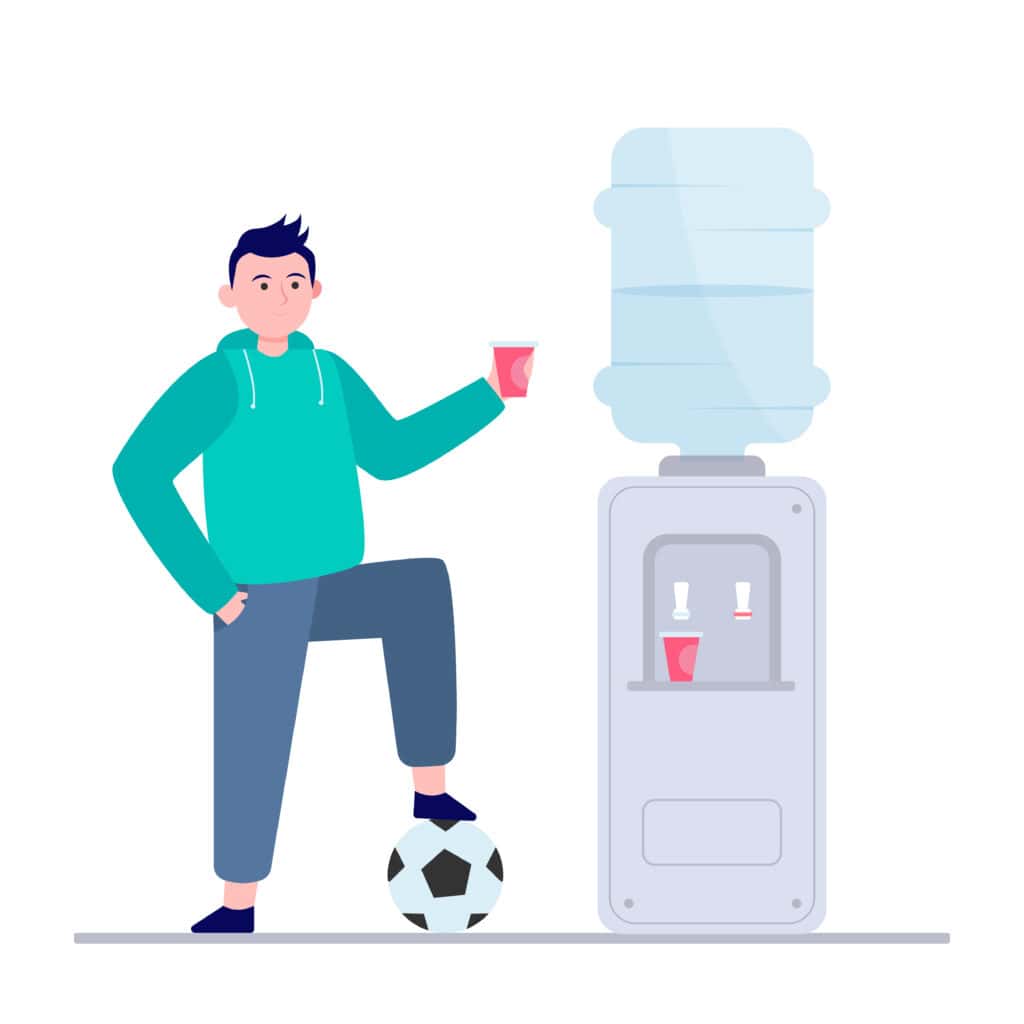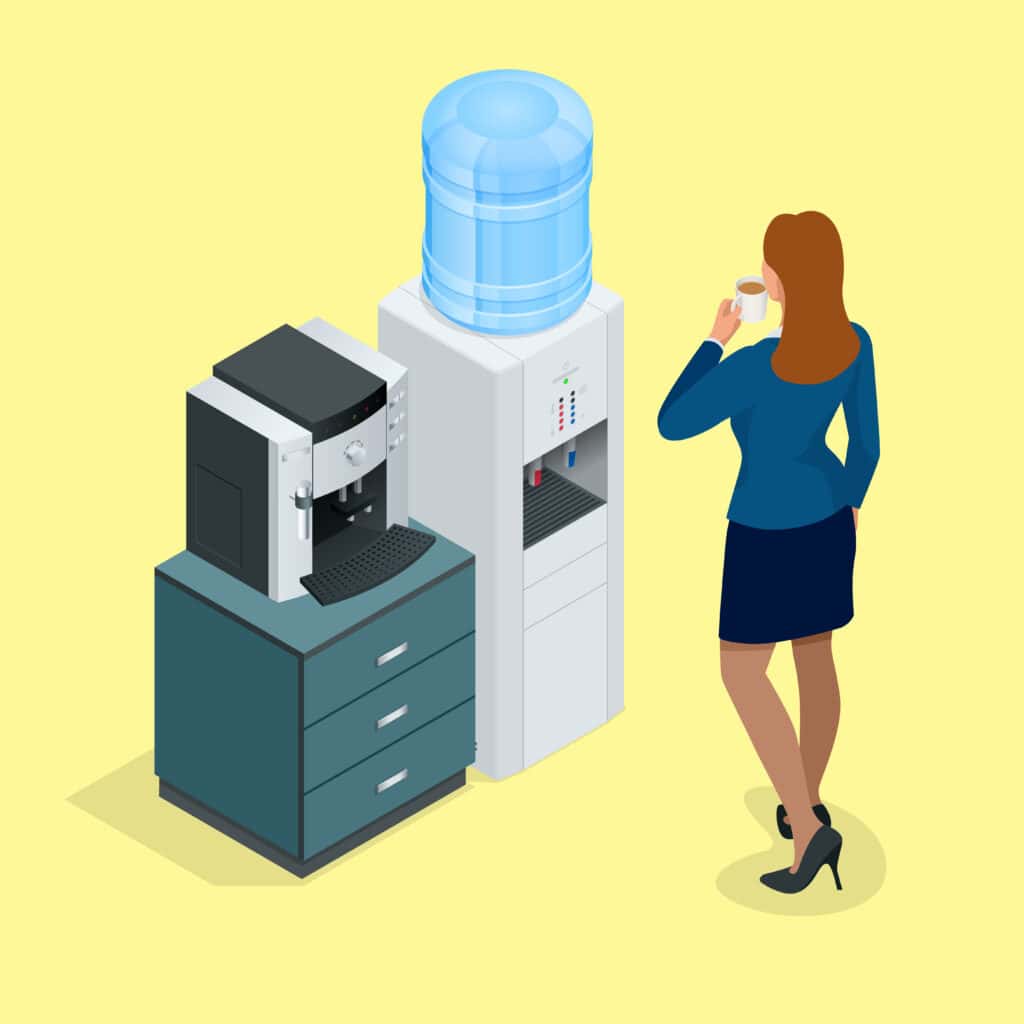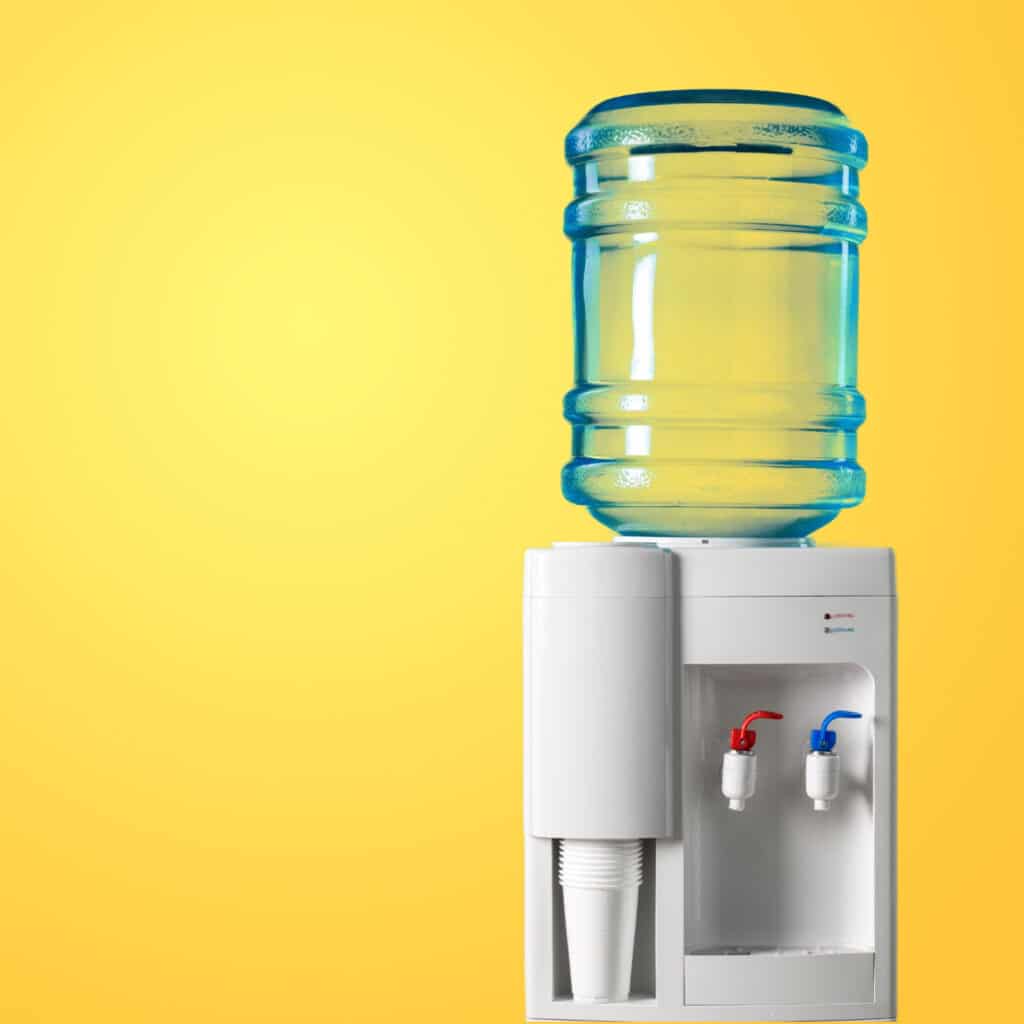Water Cooler Electricity Use
Water coolers have become a common sight in my daily life, whether I'm at the office, home, or out in public spaces. They're a convenient way to access refreshing, chilled water, and I appreciate that many of them also offer hot water options.
However, I've often wondered about the electricity these coolers consume and how I can make them more energy-efficient. In this guide, I'll delve into the electricity usage of water coolers, share tips on optimizing their energy efficiency, and explore the environmental impact associated with their operation.
Understanding Water Cooler Electricity Consumption
Water coolers, whether of the traditional bottled variety or the more modern point-of-use (POU) systems, are reliant on electricity for their operation. Delving deeper into their electricity consumption, it becomes evident that several components and factors play a role:
Cooling Mechanism
Water coolers employ either a compressor or thermoelectric cooling mechanism to chill water. Compressor-based systems tend to be more energy-efficient. However, the amount of electricity they consume varies depending on factors such as the cooling capacity and insulation of the system. This means that the energy consumption of your water cooler may be influenced by its design and specifications.
Heating Element
In the case of water coolers that provide hot water, there is an added heating element. This element uses electricity to maintain a consistent temperature for the hot and cold water cooler dispenser. Understanding the wattage and efficiency of this heating element can provide valuable insights into your water cooler power consumption electricity usage.
Dispensing Mechanism
The pumps or valves responsible for dispensing water also require electricity to operate. Examining the power requirements of these components can give you a clearer picture of how much electricity is used during each dispensing cycle.
Standby Power
Many modern water coolers come equipped with additional features such as LED displays, digital controls, and sensors. These components consume standby power even when the cooler is not actively dispensing water. Understanding the standby power consumption of your water cooler can help you make informed decisions about its energy efficiency and potential savings.
Ambient Temperature
The environmental conditions in which the water cooler is placed can significantly impact its energy consumption. Cooling systems typically work harder in warmer environments, as they need to overcome higher temperatures to maintain the desired water temperature. Monitoring the ambient temperature and its effects on your water cooler's electricity consumption can help optimize its performance.
Usage Patterns
How frequently and for how long the water cooler is used plays a crucial role in determining its overall electricity consumption. Tracking usage patterns can help you estimate the monthly or annual energy costs associated with your water cooler, allowing for better energy management and cost control.

Optimizing Water Cooler Electricity Use
When it comes to minimizing electricity consumption from your water cooler, a multifaceted approach can lead to significant energy savings. Here's a detailed breakdown of strategies to help you make the most of your water cooler while reducing its environmental impact:
Choose Energy-Efficient Models
When purchasing a water cooler, prioritize ENERGY STAR certified models. These devices adhere to stringent energy efficiency standards, ensuring lower electricity consumption compared to non-certified units. Over time, this can result in substantial energy and cost savings.
Proper Placement
The location of your water cooler matters. Avoid placing it in direct sunlight or near heat sources like radiators. High ambient temperatures force the cooling system to work harder, consuming more electricity. Optimal placement in a cooler environment reduces the workload on the cooling mechanism, leading to energy savings.
Maintain Optimal Temperature
Adjust the temperature settings of your water cooler thoughtfully. For cold water cooler electric consumption, set it to a temperature that suits your preferences without over-chilling, as excessive cooling consumes more energy. Similarly, for hot water, use the lowest temperature setting that satisfies your needs. Regularly monitor and adjust these settings as required.
Regular Maintenance
Keep your water cooler in top condition through regular maintenance. Cleaning the condenser coils, replacing air filters, and checking for leaks are essential tasks. A well-maintained unit operates more efficiently, reducing its electricity consumption. Develop a maintenance schedule to ensure these tasks are performed regularly.
Consider Point-of-Use Systems
Point-of-use water coolers, which connect directly to your water supply, are generally more energy-efficient than traditional bottled water coolers. They eliminate the need for large water bottles and the associated energy costs of production and transportation. Consider transitioning to a point-of-use system to reduce your environmental footprint and electricity usage.
Implement Usage Policies
In an office or communal setting, encourage responsible water cooler usage among employees. Remind them to turn off the hot water dispenser when it's not in use and avoid leaving the cooler running unnecessarily. Simple reminders and policies can promote energy-conscious habits.
Energy Management Systems
Some water cooler manufacturers offer models equipped with energy management systems. These systems may include features like programmable scheduling and power-saving modes. Leveraging these advanced features can further optimize electricity use, especially in settings with varying demand throughout the day.

Environmental Impact
Beyond their electricity consumption, water coolers have a broader environmental footprint that deserves consideration. To make informed choices for sustainability, it's crucial to delve into the following aspects:
- Bottled Water Impact: Traditional bottled water coolers contribute significantly to environmental issues. The production, transportation, and disposal of plastic bottles generate substantial carbon emissions and plastic waste. Transitioning to point-of-use (POU) water cooler systems can dramatically mitigate this impact. POU systems eliminate the need for single-use plastic bottles, leading to a reduction in both plastic waste and the carbon footprint associated with their production and transportation.
- Energy Source: The source of electricity that powers your water cooler plays a vital role in its overall environmental impact. Consider sourcing electricity from renewable energy providers or using energy-efficient appliances to power your cooler. By doing so, you can minimize the carbon emissions associated with electricity generation, aligning your water cooler use with environmentally friendly practices.
- Water Usage: Beyond electricity and plastic waste, water coolers also influence water consumption. To minimize water wastage, conduct regular checks for leaks in the system and address them promptly. Additionally, consider installing water-saving features such as motion sensors for water dispensing. These measures not only conserve water resources but also contribute to a more eco-conscious operation of your water cooler.
- Recycling: If you opt for traditional bottled water coolers, it's essential to ensure the proper recycling of empty plastic bottles. Implement recycling programs and educate users about the importance of recycling. This practice reduces plastic waste and contributes to a circular economy by promoting the reuse of materials.
The Impact of Water Cooler Size
When it comes to water coolers, the size of the unit plays a significant role in determining its energy consumption. A larger water cooler typically consumes more electricity, primarily due to higher cooling demands.
To make an informed choice that minimizes energy use, it's essential to consider the specific needs of your space and select an appropriately sized water cooler.
Here's a more detailed exploration of how the size of your water cooler can influence energy consumption:
Cooling Capacity
Larger water coolers are equipped with more extensive cooling systems to handle a higher volume of water. While this can be beneficial for spaces with high water demand, it also means that the cooling system has to work harder to maintain the desired water temperature. As a result, a larger unit typically consumes more electricity.
Space and Usage
Assess the size of the area where you plan to install the water cooler and the anticipated usage patterns. If you have a small office or limited space, a compact water cooler may suffice and consume less electricity. Conversely, in larger spaces with high water consumption, a larger unit might be necessary but will likely consume more energy.
Efficiency Considerations
Besides size, the energy efficiency of the water cooler itself is crucial. Some larger models may incorporate advanced features or technologies that enhance their energy efficiency, mitigating the impact of their size to some extent. Therefore, when selecting a larger unit, prioritize models that are designed with energy-saving features.
Customization
Some water cooler manufacturers offer customizable options to match the cooling capacity to your specific needs. This allows you to strike a balance between size and energy efficiency. By tailoring the unit to your requirements, you can minimize energy consumption without sacrificing performance.
Regular Cleaning and Maintenance
In addition to focusing on energy efficiency, the practice of regular cleaning and maintenance is crucial for ensuring the longevity and optimal performance of your water cooler. Proper maintenance not only enhances the unit's lifespan but also contributes to the quality and safety of the water it dispenses. Here's a more in-depth look at key maintenance tasks:
- Cleaning the Water Reservoir: The water reservoir is a critical component of your water cooler. Regular cleaning is essential to prevent the buildup of contaminants, such as mineral deposits and bacteria. Follow the manufacturer's guidelines for cleaning frequency and methods. This may involve emptying and thoroughly cleaning the reservoir, using approved cleaning solutions, and rinsing it thoroughly before refilling.
- Sanitizing the Dispensing Area: The dispensing area, including the taps, drip tray, and any touchpoints, should be sanitized regularly. Bacteria can accumulate in these areas, potentially compromising water quality. Disassemble and clean these parts using appropriate sanitizing agents to ensure that the water dispensed remains safe for consumption.
- Replacing Filters: If your water cooler is equipped with filters, adhere to the manufacturer's recommendations for filter replacement. Filters become less effective over time, and using them beyond their recommended lifespan can result in decreased water quality. Regularly replacing filters ensures that the water is adequately filtered and safe to drink.
- Inspecting for Leaks: Periodically check your water cooler for any signs of leaks. Leaks not only waste water but can also damage the unit and the surrounding area. Promptly address any leaks by identifying their source and taking necessary corrective measures.
- Maintenance Schedule: Develop a maintenance schedule that includes tasks such as cleaning, sanitizing, and filter replacement. Consistently following this schedule will help you stay on top of maintenance needs and prevent potential issues from arising.
- Manufacturer's Guidelines: Always refer to the manufacturer's instructions and recommendations for maintenance. They are the best source of information specific to your water cooler model.
Water Cooler Electricity Use FAQs
Q: How much electricity does a water cooler dispenser use?
A: The electricity consumption of a water cooler dispenser can vary depending on its type and features. However, on average, a typical water cooler dispenser that provides both hot and cold water can use anywhere from 100 to 800 watts when actively cooling or heating water. It's essential to check the manufacturer's specifications for the specific model you have to determine its exact power usage.
Q: How much electricity does a cooler use in 1 hour?
A: The electricity consumption of a cooler in one hour depends on its type and size. In general, a standard room air cooler or fan can use around 100 to 500 watts per hour, while larger evaporative coolers or air conditioning units can consume significantly more, ranging from 500 to 5,000 watts or more per hour. The exact wattage will depend on the specific make and model of the cooler and its settings.
Q: How much electricity does a water cooler use per hour?
A: The electricity consumption of a water cooler per hour varies depending on the type of water cooler and its features. A typical water cooler, such as a freestanding bottle-less bottled water dispenser, may use around 100 to 800 watts per hour when actively cooling or heating water. However, sme energy-efficient models may consume less power. To get the precise hourly usage for your water cooler, refer to the manufacturer's specifications or consult the appliance's energy label, if available.
Q: Does a water dispenser use electricity when not in use?
A: Whether a water dispenser uses electricity when not in use depends on its design and features. Here are some common scenarios:
- Basic Dispensers: Traditional water dispensers without additional features like heating or cooling typically do not consume electricity when not in use. They only use power when you operate them.
- Hot and Cold Water Dispensers: Water dispensers with heating and cooling functions may have minimal standby power consumption to keep internal components ready for use. However, this standby power usage is generally low and not significant in terms of energy consumption.
- Modern Energy-Efficient Models: Some newer water dispensers are designed to be energy-efficient and may have features like energy-saving modes or automatic shutdown when not in use, reducing electricity usage to a minimum.
Conclusion
As I reflect on the electricity usage and environmental impact of water coolers, I've learned that our choices and habits play a significant role in shaping their efficiency and sustainability. It's not just about enjoying cold or hot water—it's about using this convenience responsibly.
Personally, I now prioritize energy-efficient models, mindful placement, and temperature adjustments to reduce electricity consumption. Regular maintenance has become a habit, ensuring my water cooler operates at its best while reducing its environmental footprint. Transitioning to point-of-use systems and sourcing clean energy align with my commitment to eco-conscious practices.
And I've come to appreciate that even seemingly small actions, like recycling and minimizing water wastage, can collectively make a big difference. So, as I enjoy the benefits of my water cooler, I'm also actively working to minimize its impact on both my wallet and our precious planet.
Sources
https://www.nrel.gov/docs/fy04osti/33905.pdf
https://www.usgs.gov/mission-areas/water-resources/science/thermoelectric-power-water-use

